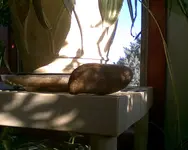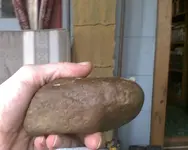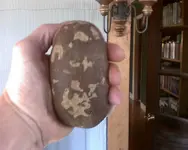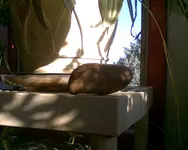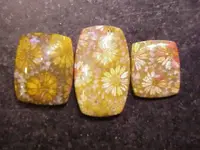diegocastellano
Greenie
Hello and good day to you. Any ideas on this rock? Open to any possible ideas since left with the question of what kinda trouble I could be in. Already tried the univ.of KS and said it was a rock with sediment on it. So they don't care, only I do. Ks is on the bible belt so the face that's on there is already gonna be Taboo! Not that I am any kinda archaeologist, am learning fast! Only 2 people who bothered to answered, one said its an Manuport, other said its an artifact. So I am left to do the work myself. Okay what harm can it do right? What if somebody carried that rock from somewhere and brought it to KS. Why? It had to mean something to someone. Could have came from Russia over the so-called land bridge: only because of the fact it looks like a brown bear in sunlight! Funny is it not using what if's, what they do! Then we have the cave, house or mountain. Who knows what symbols they used at the time. Then the bird, yes its a bird and not a plane God forbid!! In the end we find things, or should say they find us. Is there any meanings to all of this? Who knows, I'll keep looking for stuff till I die! How about you? Thanks for any info you might have, the rock thanks you!



